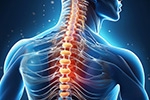Home »
Blog » Physical Therapy
| Stem Cell, PRP, Acupuncture in Queens & Long Island, New York
Physical Therapy | Stem Cell, PRP, Acupuncture in Queens & Long Island, New York
Struggling with persistent back pain? Physical therapy can help relieve pain, restore mobility, and prevent future discomfort. Through targeted treatments like core-strengthening exercises, manual therapy, and advanced modalities such as ultrasound and electrostimulation, you can regain strength and improve posture. With the right approach, long-term relief is possible—helping you stay active and pain-free in daily life.
Read more
Back pain is a leading cause of disability worldwide, affecting individuals of all ages and lifestyles. While often manageable, its impact on daily life underscores the importance of informed, evidence-based care. This guide outlines the causes, diagnostic approaches, and treatment strategies to help patients better understand their condition and collaborate effectively with healthcare providers.
Read more
Patellofemoral Pain Syndrome (PFPS), often referred to as “runner’s knee,” is a common condition characterized by pain in the front of the knee and around the patella (kneecap). It affects individuals of all ages but is particularly prevalent among athletes and those who engage in repetitive knee-bending activities. Left untreated, PFPS can significantly impact mobility and quality of life. At Precision Pain Care and Rehabilitation, we aim to shed light on this condition and explore how interventional pain management can offer lasting relief.
Read more
Patellar tendonitis, often referred to as “jumper’s knee,” is a common overuse injury that affects the patellar tendon, a crucial structure connecting the kneecap (patella) to the shinbone (tibia). While this condition is frequently seen in athletes who engage in activities involving repetitive jumping or running, it can also affect individuals whose lifestyles or occupations place prolonged stress on the knee joint.
Read more
Knee bursitis is a common yet often misunderstood condition that can significantly impact daily activities, mobility, and overall quality of life. At Precision Pain Care and Rehabilitation, we aim to help patients understand their pain and provide effective treatment options, including advanced interventional pain management techniques. Let’s delve into the causes, symptoms, and treatments for knee bursitis.
Read more
Knee pain is a common complaint among individuals of all ages, and one specific cause, Chondromalacia Patella, is often misunderstood. This condition affects the cartilage under the kneecap, leading to discomfort and potentially limiting mobility. At Precision Pain Care and Rehabilitation, we approach this issue through advanced interventional pain management techniques to help patients regain their quality of life.
Read more
Knee pain is one of the most common complaints among active individuals, particularly runners, cyclists, and athletes. One condition that frequently arises in this context is Iliotibial Band Syndrome (ITBS). This painful and sometimes debilitating condition can disrupt daily activities and hinder athletic performance. However, with proper understanding and targeted treatment, it is possible to manage ITBS effectively and regain mobility. Let’s delve into the causes, symptoms, and treatments for ITBS, with a special focus on Interventional Pain Management approaches.
Read more
Knee pain is a common complaint affecting individuals of all ages, from active athletes to older adults. Among the many causes of knee pain, tendonitis an inflammation or irritation of a tendon is a leading culprit. Tendonitis of the knee, often referred to as patellar tendonitis or jumper's knee, can significantly impact daily activities, mobility, and quality of life. Interventional pain management offers effective solutions for alleviating knee pain caused by tendonitis. At Precision Pain Care and Rehabilitation, our focus is on providing targeted, minimally invasive treatments to restore function and relieve pain.
Read more
Knee pain is a pervasive issue that affects millions worldwide, often stemming from arthritis—a condition that can significantly diminish one's quality of life. At Precision Pain Care and Rehabilitation, we understand the profound impact this pain can have on your daily activities and emotional well-being. Our mission is to provide compassionate, comprehensive care to help you regain control over your life.
Read more
Knee pain and Achilles tendonitis are two conditions that can significantly affect mobility and quality of life. Whether you're an athlete, a weekend warrior, or simply managing everyday tasks, these conditions can disrupt your routine and hinder your ability to move comfortably. At Precision Pain Care and Rehabilitation, advanced interventional pain management techniques offer effective solutions for these common issues, helping patients regain control over their lives.
Read more
Love this Post? Spread the World






















